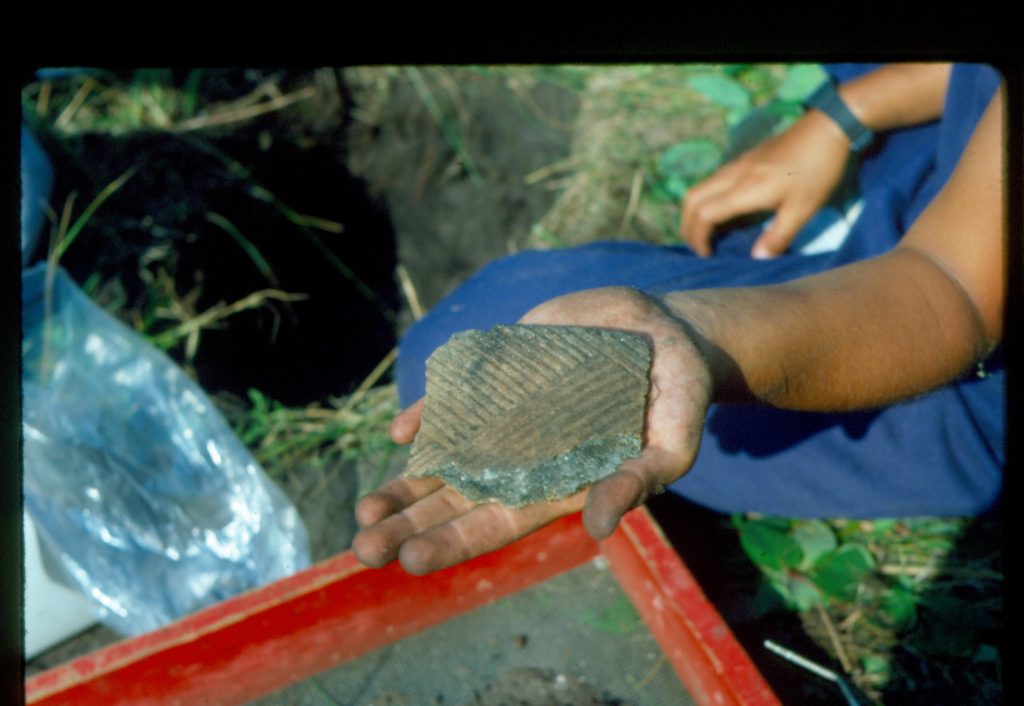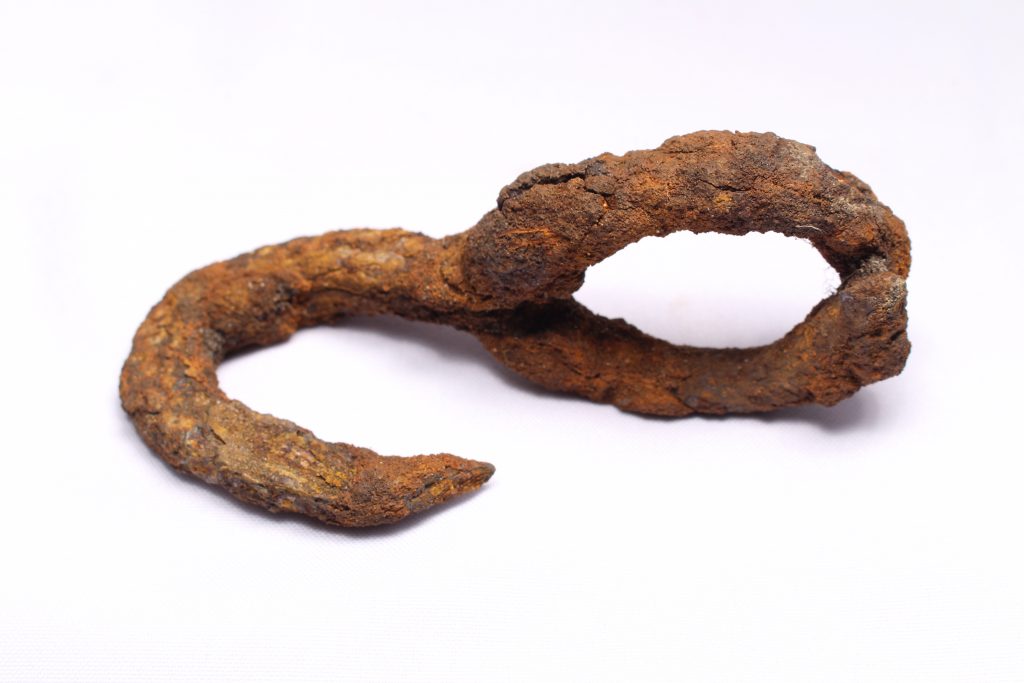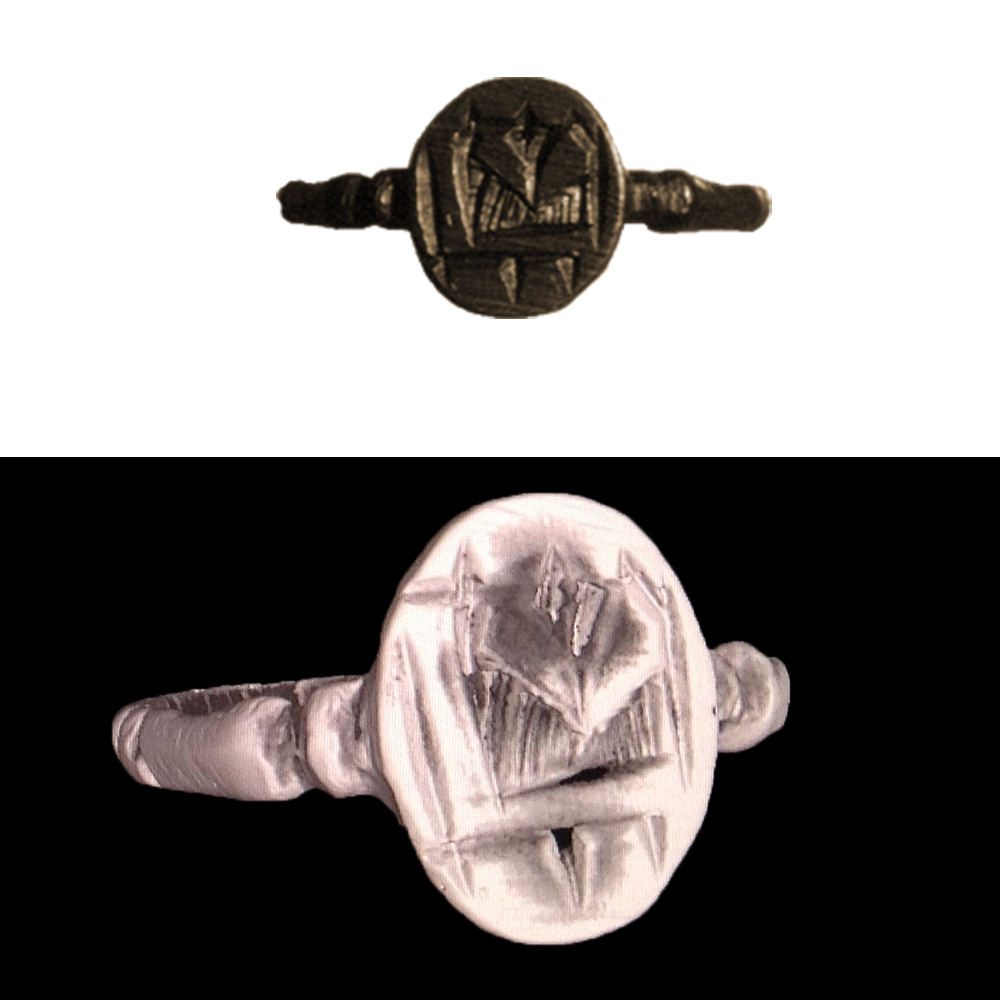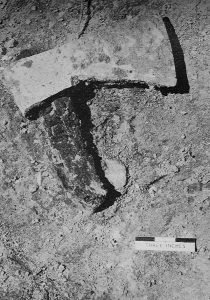Museum of Ontario Archaeology: Excavation Findings
The archaeological assessment of Christian, Hope and Beckwith islands targeted areas with the highest archaeological potential to locate as many sites as possible. These targeted areas included lands around the two inland lakes on Christian Island, sandy beaches and any ancient, elevated beach ridges.

Example of a large decorated pottery fragment found while test pitting Christian Island for additional sites, 1987.
The survey used shovel test pitting of 50 centimetre test pits at five to ten metre intervals. Five new sites were discovered and each was subjected to limited excavations.
A total of 571 one metre squares were excavated in the vicinity of the fort with units concentrated, primarily, outside of the fort’s stone walls.
In 1987, trenches were also excavated to the west, south and east of the fort walls to detect any structures adjacent to the fort. Water-logged deposits prevented the completion of the south trench, but no definitive structures were found. Limited excavations were also conducted inside the fort with the placement of a two metre wide test trench through the west wall, verifying that the foundation was intact in this area. Extensive remains of wooden planking and other preserved wood were documented, consistent with Carruthers’s 1965 excavations. A one by five metre trench was placed in the central interior of the fort, in which organic remains and the edge of a large depression was encountered, perhaps part of the cistern reported by the Jesuits and nineteenth century visitors to the fort.
In the bush lot west of the Fort, however, only limited evidence of occupation was found. Excavations were also placed to the north of the fort, where subsurface anomalies had been suggested by geophysical survey. In addition to recent disturbance, a cellar was found that produced European and Indigenous artifacts. Interestingly, a double row of post moulds was also recorded approximately 26 metres north of the fort, suggesting a compound attached to its northern end.
View the full 3D model on Sketchfab. (This link is external and as a result it may not conform to the accessibility standards.)
More than 6700 Indigenous and European artifacts were found in these excavations including Jesuit period rings, a musket ball, and an assortment of metal items.
The five new sites were also subjected to test excavations. Ten one metre squares at the Omand site revealed a midden deposit at least 60 centimetres deep that contained an abundance of fish bone and trade goods including a L-heart ring similar to those from St. Marie II. The site appears to have been a large fishing station used by the Wendat in the first half of the seventeenth century. Test units at the Little Sand site yielded evidence of a small fishing station located about 25 metres from the present shore line. Two glass trade beads, one piece of cut brass or copper and fragments from five ceramic vessels were recovered, as well as an Early Archaic bifurcate base point, probably curated by the Wendat.
By far the most important site of the newly discovered components was the Charity site at which both European and Indigenous artifacts were found. The low density of artifacts suggested to the Museum archaeologists that the site had been occupied briefly.





